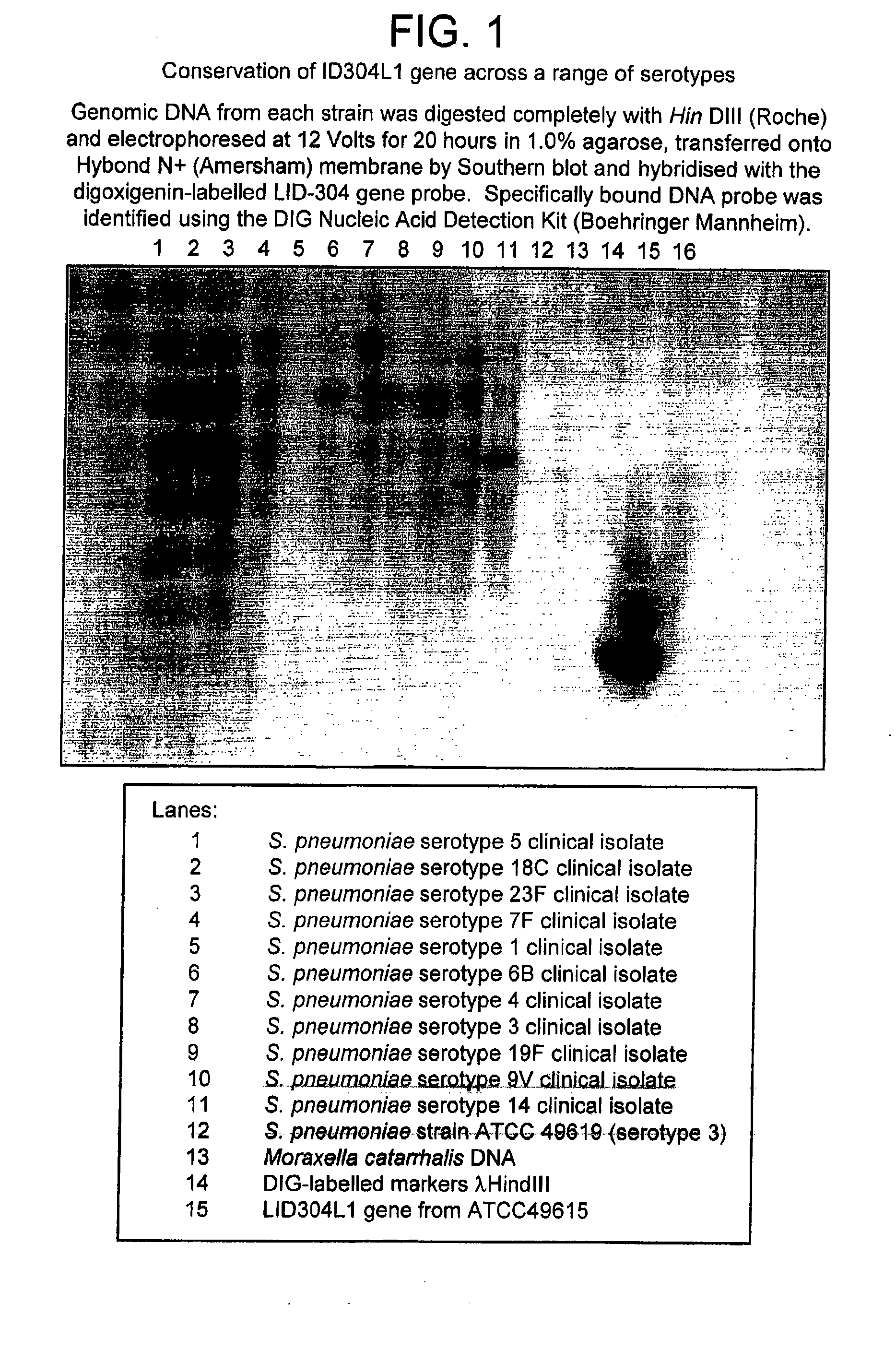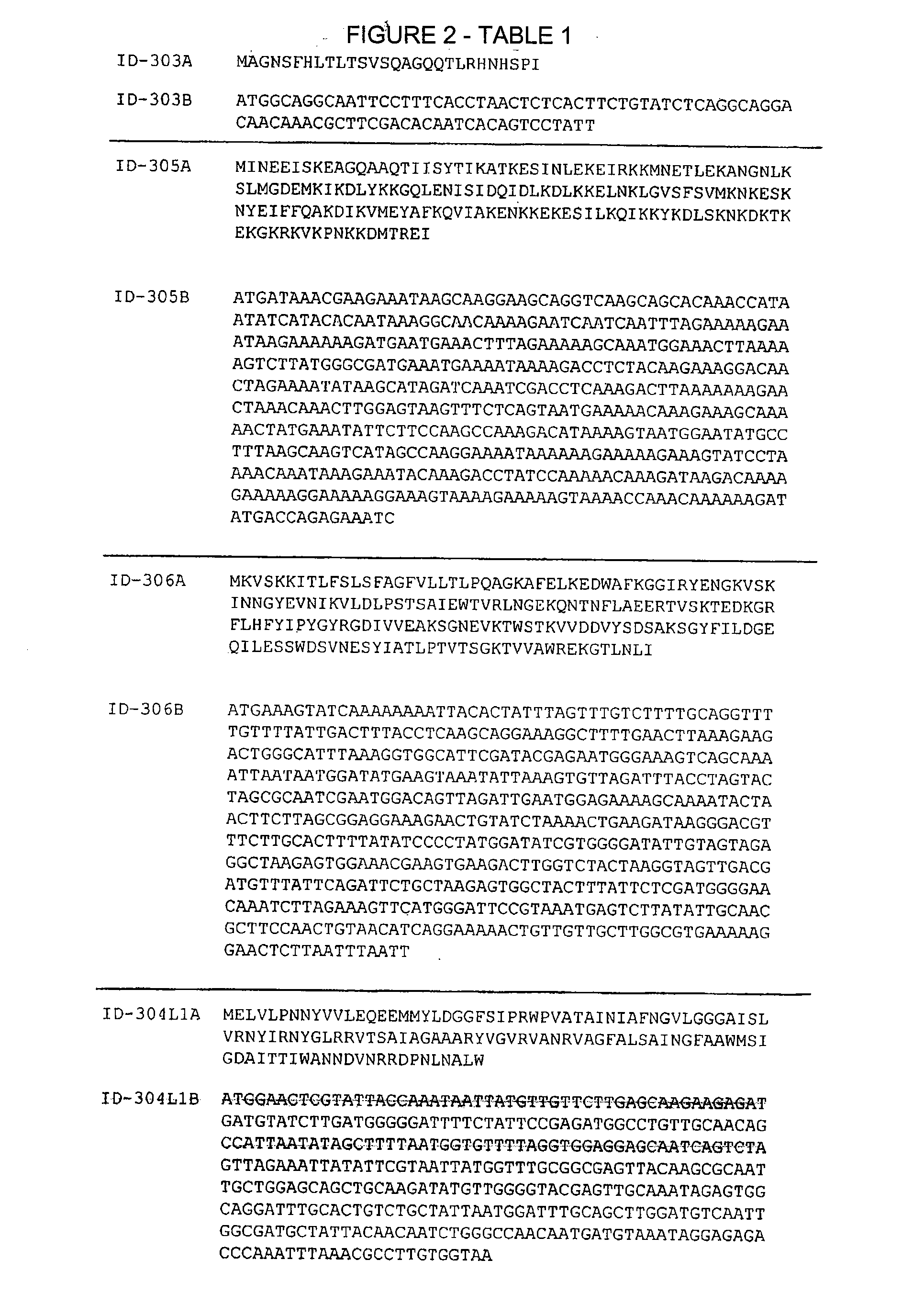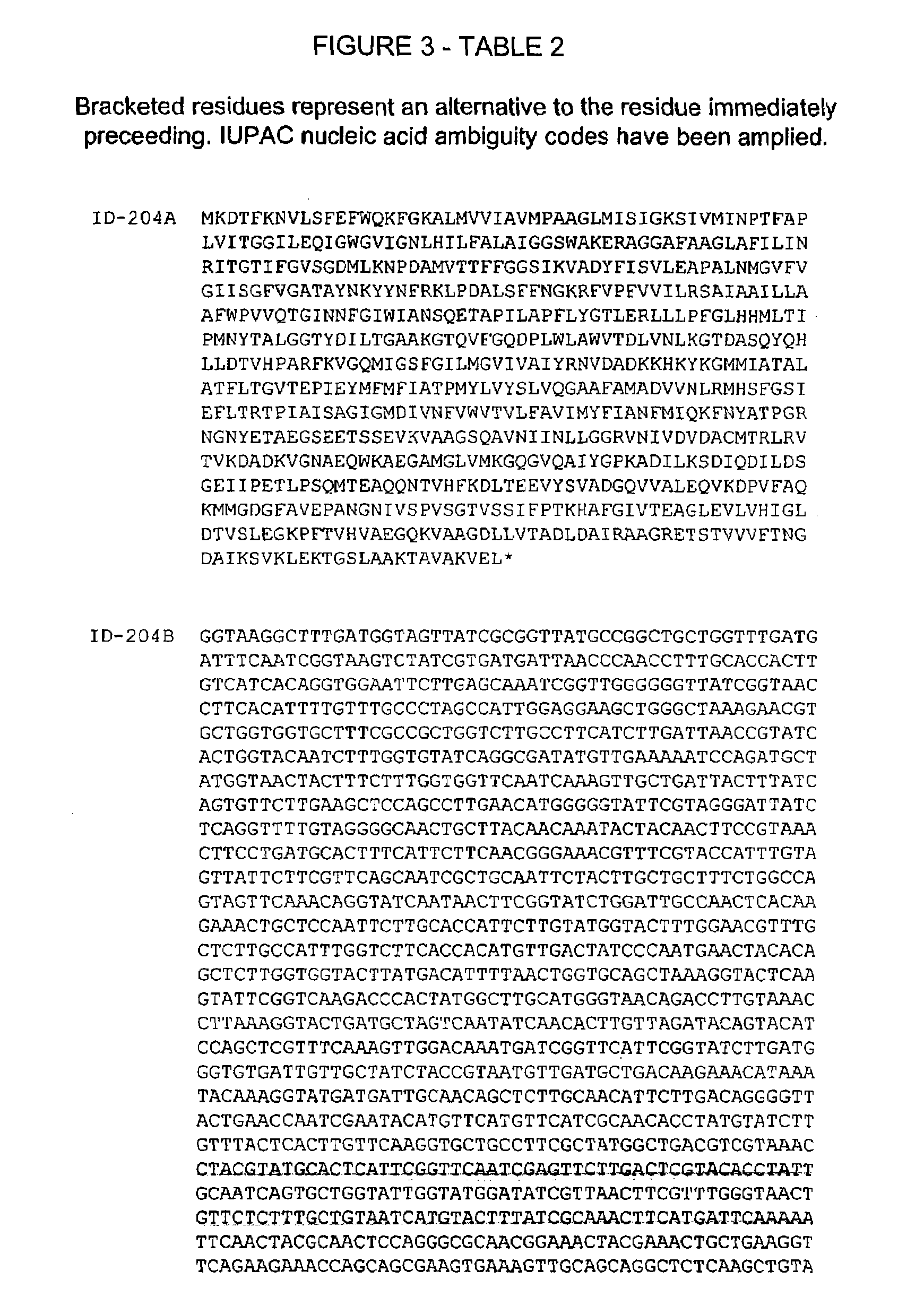Secreted Streptococcus Pneumoniae Proteins
a technology of streptococcus pneumoniae and proteins, which is applied in the field of proteins derived from streptococcus pneumoniae, can solve the problems of increased risk of pneumococcal septicaemia, increased risk of pneumococcal infection death, and substantial cos
- Summary
- Abstract
- Description
- Claims
- Application Information
AI Technical Summary
Problems solved by technology
Method used
Image
Examples
example 1
(i) Construction of the pTREP1-nuc Series of Reporter Vectors
[0077](a) Construction of Expression Plasmid pTREP1
[0078]The pTREPI plasmid is a high-copy number (40-80 per cell) theta-replicating gram positive plasmid, which is a derivative of the pTREX plasmid which is itself a derivative of the previously published pIL253 plasmid. pIL253 incorporates the broad Gram-positive host range replicon of pAMβ1 (Simon and Chopin, Biochimie, 70:559-567 (1988)) and is non-mobilisable by the L. lactis sex-factor. pIL253 also lacks the tra function which is necessary for transfer or efficient mobilisation by conjugative parent plasmids exemplified by pIL501. The Enterococcal pAMβ1 replicon has previously been transferred to various species including Streptococcus, Lactobacillus and Bacillus species as well as Clostridium acetobutylicum, (Oultram and Klaenhammer, FEMS Microbiological Letters, 27:129-134 (1985); Gibson et al., (1979); LeBlanc et al., Proceedings of the National Academy of Science ...
example 2
Conservation and Variability of ID-304L Variants Among Different Isolates of Streptococcus pneumoniae
[0094]The presence of genes ID304L1 and ID305 in the S. pneumoniae serotype 3 strain ATCC 49619 was investigated. Oligonucleotide primers were designed based upon the known nucleic acid sequences given in Table 1 and these gene targets were amplified by PCR.
(i) Amplification and Labelling of Specific Target Genes as DNA Probes for Southern Blot Analysis
[0095]Oligonucleotide primers were designed to amplify corresponding gene-specific DNA probes (Appendix 2). Specific gene targets (ID304L1 and ID305) were amplified by PCR using PFUTURBO® DNA polymerase (Stratagene) according to the manufacturer's instructions. Typical reactions were carried out in a 50 μl volume containing 100 ng of template DNA, a one tenth volume of enzyme reaction buffer, 100 ng of each primer, 200 μM of each dNTP and 1.25 Units of PFUTURBO® DNA polymerase. A typical reaction contained an initial 3 minute denatura...
PUM
| Property | Measurement | Unit |
|---|---|---|
| pH | aaaaa | aaaaa |
| pH | aaaaa | aaaaa |
| pH | aaaaa | aaaaa |
Abstract
Description
Claims
Application Information
 Login to View More
Login to View More - R&D
- Intellectual Property
- Life Sciences
- Materials
- Tech Scout
- Unparalleled Data Quality
- Higher Quality Content
- 60% Fewer Hallucinations
Browse by: Latest US Patents, China's latest patents, Technical Efficacy Thesaurus, Application Domain, Technology Topic, Popular Technical Reports.
© 2025 PatSnap. All rights reserved.Legal|Privacy policy|Modern Slavery Act Transparency Statement|Sitemap|About US| Contact US: help@patsnap.com



